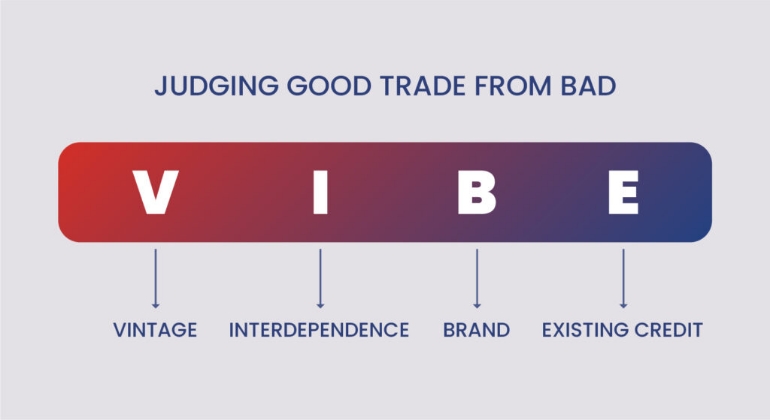Supply Chain Finance
Building the faith to lend

Argentina’s economic crisis reveals a lot about the psychology behind lending. When inflation devalued the notes, citizens resorted to IOUs. Many got theirs signed with the priest as witness, this assured the lender higher chances of repayment. Faith, it seems has a lot to do with lending! However, for a lender financing trade, ‘VIBE’ is how faith is built.
V is for Vintage: time tests the true strength of a relationship
As the loops of sacred smoke escape the agarbatti, faith here is built counterintuitively. To produce incense, a large central corporate interacts with smaller buyers and suppliers. When asked to fund this trade, the financier’s instinct is to scrutinize the books of the smaller business. However, actual trade, counterintuitively, depends on the larger business. As it is the larger player that gives life to its surrounding supply chain partners. One way to judge trade then, is looking at the length of the relationship between the large and small business. For many it is important to
deal with someone who is good to business with, which includes paying on time. And if year after year, the businesses choose each other, the lender finds the trade more reliable to fund.
I is for Interdependence: businesses take care of the ones they need
When age is not as easy to determine, interdependence is another marker that can be assessed. Look at the case of a FMCG corporate selling edible oil. When the distributor values the corporate’s business, the products are more strongly pushed onto retail shelves. Similarly, the corporate introduces new products and increases sales volume first to the distributors it finds more invested in the trade. In understanding that one needs the other, more
interdependent trade partners ensure more robust business. Thus, when trade is based on strong ties, the lender’s risk is a little lesser.
B is for Brand: customer loyalty sets demand
Traditionally, when one thinks of brand, the mind wanders to four wheelers, and time-telling wrist ornaments. Here is where the brand pull of low-cost chappals, tells a different tale. While some use them as bathroom slippers, many construction workers depend on these chappals to stabilize them at freakish heights. When their life is on the line, the worker’s choice in the brand is unshakeable. This curious phenomenon has kept this footwear in business for long. Here, the brand informs the lender of the consumer behaviour that has kept the trade from faltering, hence increasing the financier’s willingness to fund.
E is for Existing Credit: a track record to judge credit behaviour
Examining existing credit is much like the lender assessing the fall before taking the leap of faith. It reveals the cashflow management capabilities of the borrowers. Especially with trade being dynamic – suppliers extending a credit line, collectors hounding customers for receivables – misallocation can occur even with a favourable bottom-line. Moreover, credit history also uncovers the borrowers’ skin in the game. If they have a significant level of their
own capital invested, they are likely to be more responsible with the funds given. In such ways, light can be shed on the expected credit behaviour of the borrowing businesses. Overall, allowing the lender to make a more informed decision.
In such ways Vayana’s ‘VIBE’ model of vintage, interdependence, brand, and existing credit, steers away from the traditional judgements of ratios and statements. Call it higher power, or the power of learning the nuances of a supply chain, it holistically discerns good business from bad. More importantly it gives lender the courage to finance trade that is inclusive of MSMEs. Many worthy smaller businesses that are normally less visible finally come into the purview of traditional lenders, made possible through their commercial association with larger corporates. Thus, the lender carries on the altruistic themes of religion, but not without justification.







